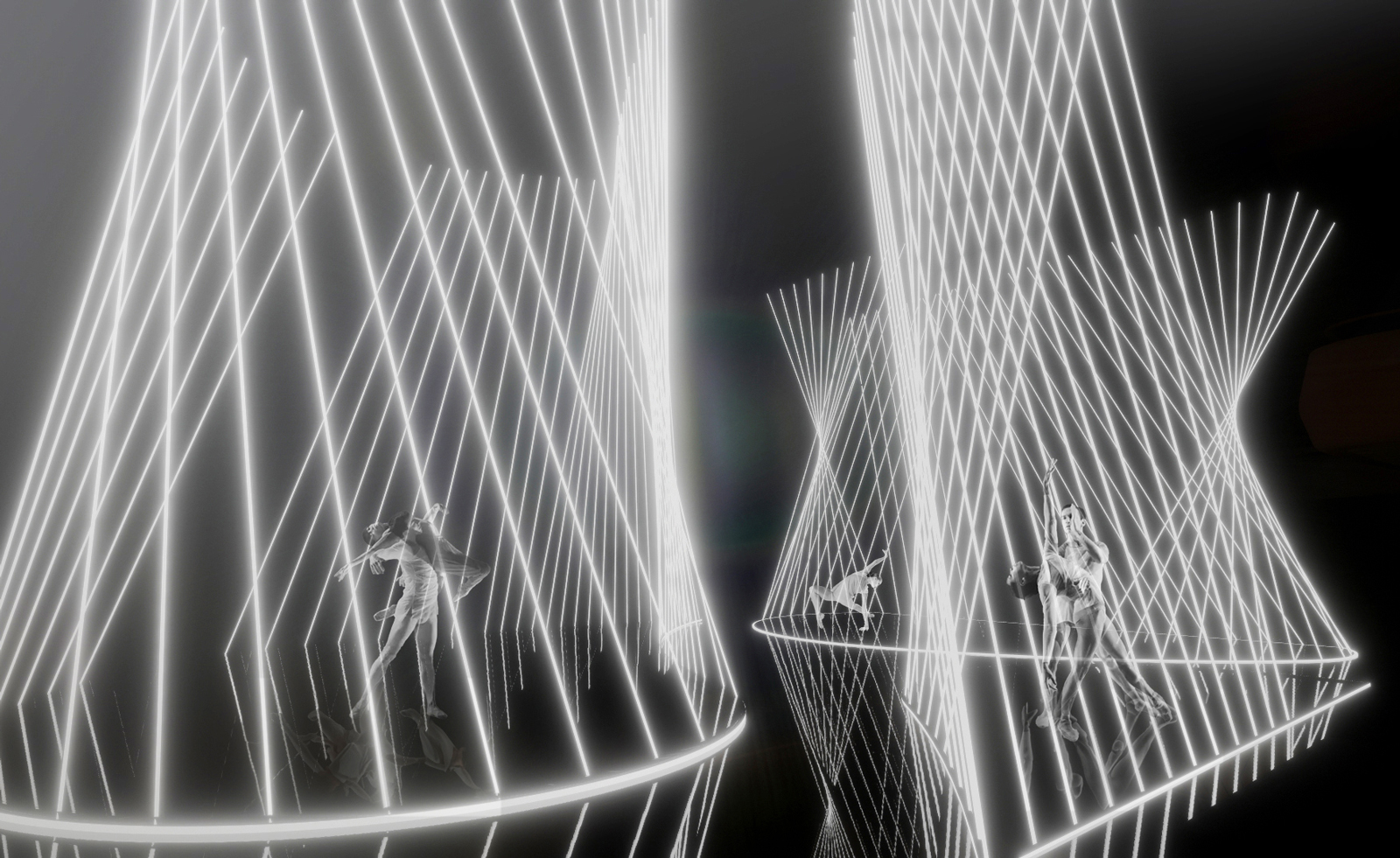
The Royal Ballet Festival of Choreography is championing new voices in choreography and innovative set design at a series of events at the Royal Opera House in London.
An emphasis on immersion and accessibility runs throughout, most noticeably in Canadian choreographer Robert Binet’s show at the Linbury Theatre (within the Royal Opera House). In Dark with Excessive Bright, the seating is removed to create a vast dark space, which becomes a fluid performance area with lighting circling each space, making the dancers appear to float. Audio-visual technology allows those with limited sight and hearing to experience the performance through a text, delivered through the medium of poetry.
Robert Binet’s set at The Royal Ballet Festival of New Choreography
‘The set is designed to give the audience the opportunity to move through the space and take in the performance from a range of perspectives,’ says Binet. ‘This flexibility to change vantage points and move through the work at a pace that suits you allows each person to create the experience that gives them the richest enjoyment of the performance. Additionally, I am working with Devon Healey, theatre artist and assistant professor of Disability Studies at the University of Toronto, to create immersive descriptive audio (IDA). Devon is blind and IDA is a soundscape of spoken text, breath and music that invites the listener into the physical experience of the dancer. Devon’s incredibly poetic voice does not just describe what may be seen, but brings together the perspectives of blind and sighted people to weave something rich and inviting for all audiences. The music and Devon’s text is also available in text format for d/Deaf audiences.’

Unusually, dancers in the performance are encouraged to follow their instincts, with the open plan of the space allowing for greater flexibility. ‘During each performance, although no movements are improvised, the dancers have choices they make about structure and sequence as it unfolds,’ Binet says. ‘This means that no two performances will ever unfold in the same way. Therefore, creating an experience that is fully accessible has to account for all the possibilities that may unfold within each performance. Although challenging to find the best ways to describe and open up this multitude of possibilities, it has made us think more deeply about the intent of each moment and how possibility in itself is far more expressive than certainty.’
The performance runs alongside new works by Gemma Bond, Joshua Junker, Jessica Lang and Mthuthuzeli November on the Royal Opera House’s Main Stage, in an all-encompassing acknowledgement of new talent and diverse voices. ‘We’ve got four world premieres on the Main Stage; an amazing immersive contemporary ballet experience in the Linbury Theatre; and we’ve also invited other dance companies to be a part of our Duets programme in the Clore Studio,’ says Emma Southworth, creative producer for The Royal Ballet. ‘It really is about exploring artistic and technical excellence and giving our audiences something new and different.’
The Royal Ballet's Festival of New Choreography takes place 10 – 21 February 2024 at The Royal Opera House, London







